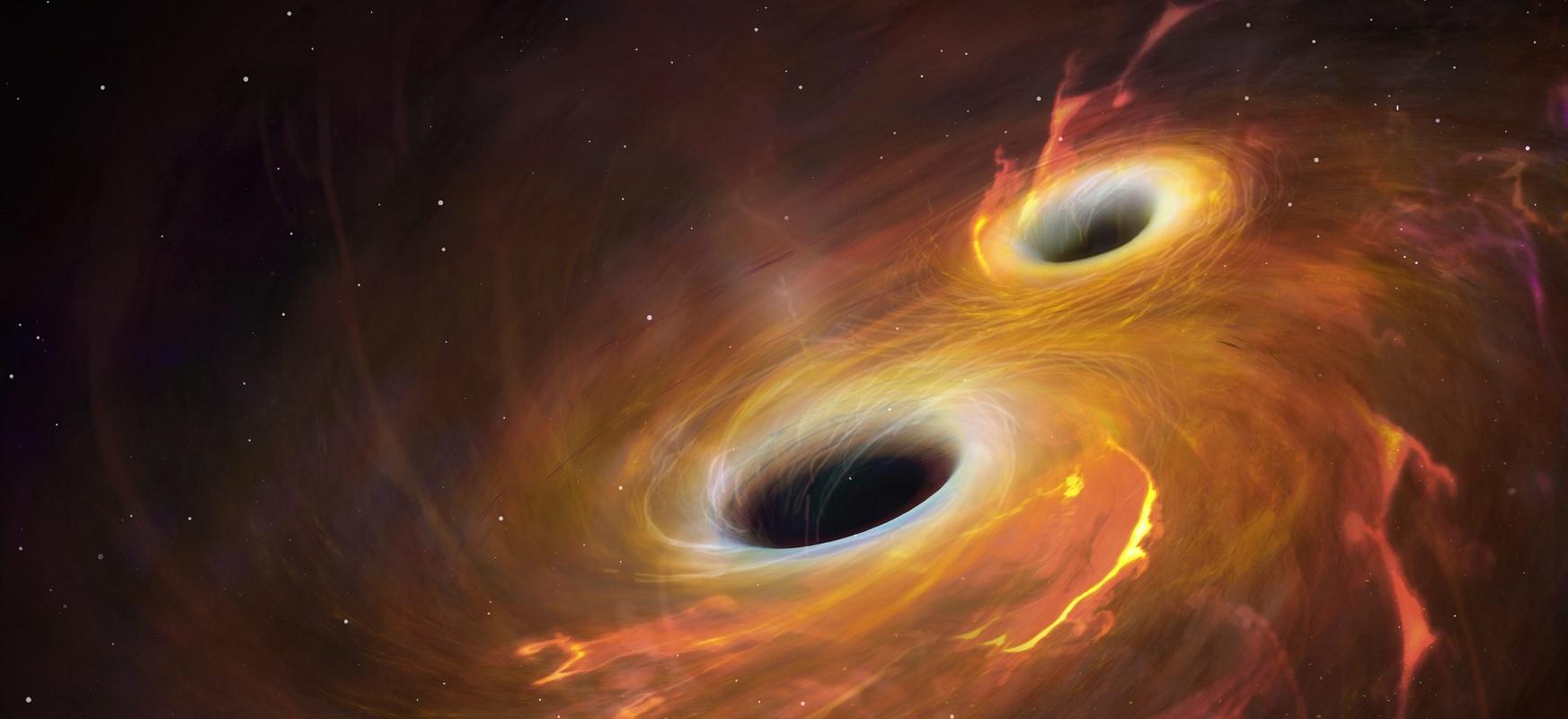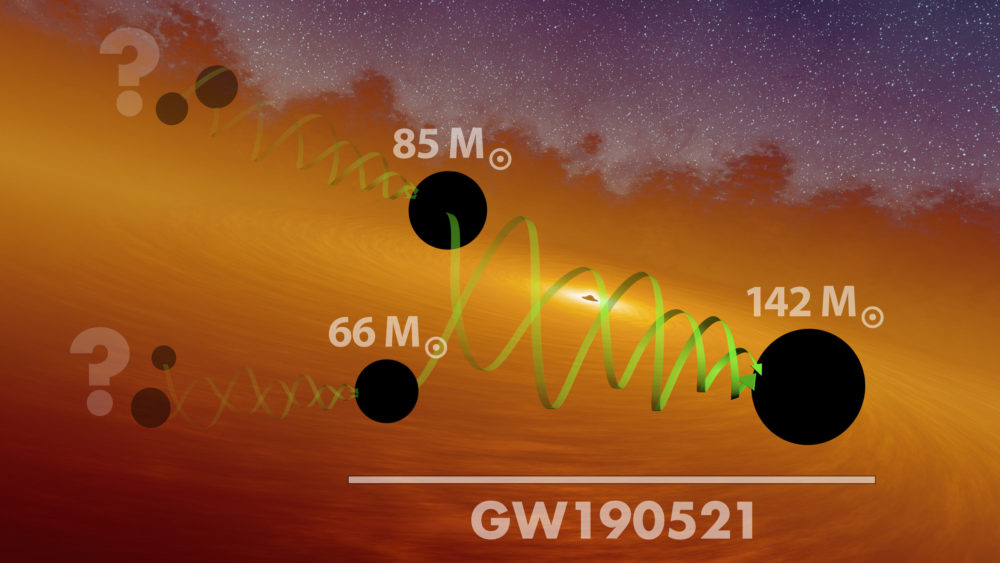Astronomers observe a record collision of two black holes. The collision created an object that researchers had been looking for for years

Astronomers have likely discovered the most massive collision of two black holes ever recorded. The chaotic connection of the two objects took place about 7 billion years ago, and now we have received the signal emitted at that time.
Thanks to the LIGO and Virgo instruments, researchers were able to observe the birth of one of the most sought-after objects in the universe.
Two actors took part in the performance: a black hole with a mass of 66 solar masses and a second black hole with a mass of about 85 solar masses. The two black holes approached each other, orbiting each other at the end at a rate of several times a second, until a collision occurred, during which powerful ripples of space-time were emitted, which spread out across the universe at the speed of light.
In the collision, a black hole with a mass of 142 solar masses was formed.
This is an extremely important discovery for astronomers. So far, researchers have been able to detect and indirectly observe black holes that fall into two different categories: smaller black holes ranging in mass from 5 to 100 times the mass of the sun, and supermassive black holes found at the centers of galaxies, with a mass of millions to billions of solar masses.
For years, astronomers have tried to find intermediate mass black holes (IMBH) ranging from 100 to 1,000 solar masses. Scientists were convinced that such objects must also exist somewhere, but they were unable to find any objects of this type. So far, several potential candidates for intermediate-mass black holes have been registered, but they are yet to be confirmed as being.

It is a real missing link between black holes with a mass of several dozen solar masses and those millions of times more massive. It was amazing that we are unable to find anything with an intermediate mass
Says Salvatore Vitale, assistant professor at the LIGO Lab at MIT dealing with gravitational waves.
The latest discovery, reported in Physical Review Letters and Astrophysical Journal Letters, could represent the first ever detection of the birth of an intermediate mass black hole. The discovery has the potential to explain why the universe looks the way it does, why it is dotted with numerous smaller black holes and far fewer supermassive black holes at the centers of galaxies.
One theory is that supermassive black holes form as small black holes gradually merge into larger and larger ones, until they eventually reach gigantic sizes. If that is the case, however, the universe should have many intermediate mass galaxies constituting the center of evolution.
This is why astronomers have searched so hard for them - the IMBH discovery could help solve this mystery
Says Vitale.
If it weren't for the gravitational waves , we wouldn't be able to see anything.
Researchers discovered the bonding process by measuring fine ripples in space-time, the so-called gravitational waves emitted when both black holes merge. Although gravitational waves are gigantic at the time of emission, by the time they reach us they are already extremely delicate and very difficult to detect.
The first gravitational waves in history were discovered only in 2015, although their existence was predicted by Albert Einstein almost 100 years earlier. Over the past five years, the LIGO and Virgo observatories have already registered 67 processes of fusing black holes, neutron stars and black holes with neutron stars.
The gravitational waves discussed here took nearly 7 billion years to reach Earth. It is therefore the most distant collision of black holes ever discovered with either LIGO or Virgo. The event GW190521 was registered on May 21, 2019, and was so delicate that it was barely detected. The LIGO and Virgo observatories recorded only four small waves lasting only 0.1 seconds. After analyzing the collected data, scientists found that when both black holes merged, a mass equivalent to seven solar masses was converted into pure gravitational wave energy in just a fraction of a second.
Astronomers estimate that such events are much rarer than the processes of merging smaller black holes. According to Vitale, for each such event, there are 500 merging processes between smaller black holes. Scientists expect more discoveries of this type.
Currently, LIGO and Virgo are out of service and are not listening to gravitational waves. Reactivation of the detectors, already with some improvements, is planned for the end of next year. Then both observatories will be characterized by even greater sensitivity.
Astronomers observe a record collision of two black holes. The collision created an object that researchers had been looking for for years
Comments
Post a Comment